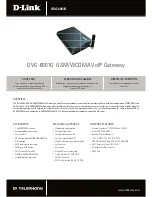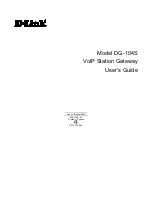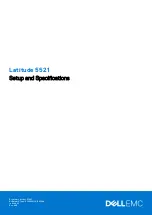
20
Where Are the Connection Diagrams?
The diagrams on pages 13 through 18 of this guide show examples of common ways to connect the 4250HD to
your HDTV, DVD, and home theater receiver. However, these diagrams do not show every possible combination
of devices. Refer to the user’s guides that came with your other electronic devices for further information.
What Cables Do I Need?
Some of the cables and adaptors shown in the diagrams may not be included with the 4250HD. The required
cables are shown in the connection diagrams in this guide.
Picture Formats
What is the Difference Between a Standard-Screen and a Wide-Screen HDTV?
The type of screen your HDTV has (wide screen or standard screen) determines how the 4250HD displays
programs on the screen. The picture format for an HDTV is a combination of
aspect ratio
and
screen resolution
and is different for standard-screen and wide-screen HDTVs.
What is Aspect Ratio?
An aspect ratio is the ratio of the width to the height of the TV screen. The aspect ratios differ because the
television industry manufactures both standard-screen and wide-screen HDTVs to appeal to consumer
viewing preferences.
What is the Screen Resolution and Scan Rate?
The screen resolution indicates the amount of detail that the picture displays. Resolution is identified by the
number of display lines on the screen. The techniques that an HDTV uses to “paint” the picture on the screen
are referred to as progressive and interlaced. With the
progressive method
, every pixel on the screen is
refreshed simultaneously. The
interlace method
involves refreshing pixels in alternation — first the odd lines
and then the even lines. For advance setup, select the scan modes that your TV can support. Refer to your
HDTV user’s guide to choose the proper scan rates (480i, 480p, 720p, 1080i) for your setup. For example, a
resolution of 1080i indicates that the screen shows 1080 lines in an interlaced display, and 480p indicates that
the screens shows 480 lines in a progressive display.
Note:
The screen resolution (1080i, 480p, and so forth) is sometimes referred to as the scan rate. The terms
are interchangeable.
A
standard-screen HDTV
has a 4x3 aspect ratio.
The screen is 4 units wide for every 3 units tall.
A screen resolution of 480p or 480i fills the screen.
A screen resolution of 720p or 1080i fills the screen.
4
3
16
9
A
wide-screen HDTV
is one-third wider than a
standard-screen HDTV. The screen is 16 units wide
for every 9 units tall..



































